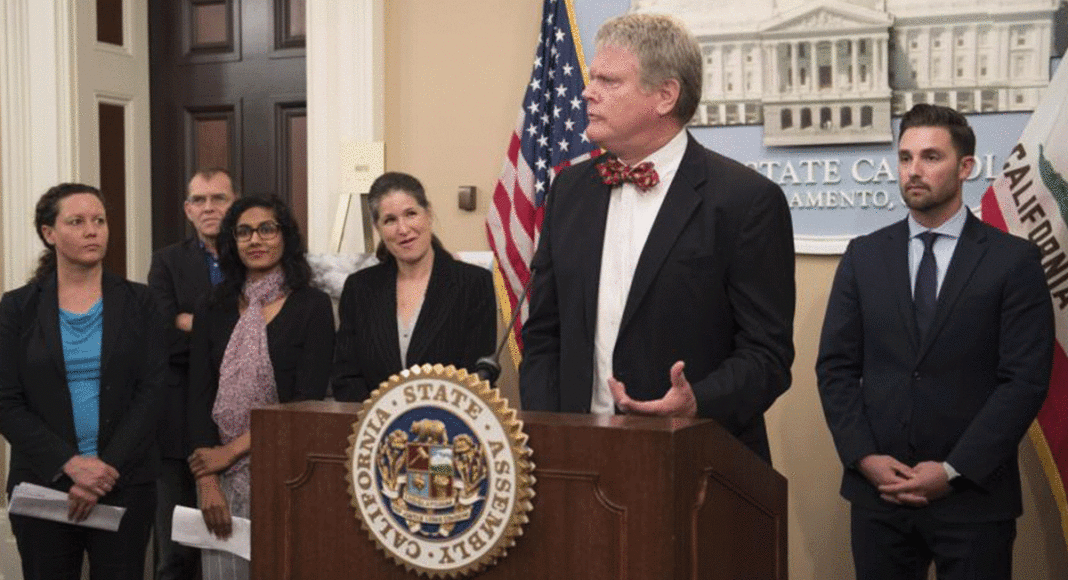Silicon Valley Bank opened in 1982 to serve startups overlooked by big lenders, which saw the fledgling tech sector as inherently risky. Roger Smith and Bill Biggerstaff, the two Wells Fargo defectors who founded the small bank with Stanford professor Robert Medearis, had deep roots in a culture that would turn Santa Clara Valley into the innovation capital of the world.
With more than $60 billion in assets, Silicon Valley Bank has long since outgrown its small-bank status. Those early days make it part of a rich tradition of community lenders that make decisions based on deep knowledge of the local market and close relationships with borrowers, but small banks have become a dying breed.
Here in the Monterey Bay, residents do still have Santa Cruz Community Credit Union. And even though Santa Cruz County Bank is merging with Lighthouse Bank to create a local powerhouse with roughly $1 billion in assets and a location in Silicon Valley, it is still not, by any means, a huge conglomerate.
But the broader decline of small banks across the Greater Bay Area reflects a broader trend driven partly by economies of scale and partly by growing compliance costs. From 1985 to 2010, the number of banks in the U.S with assets under $100 million fell from 13,000 to just 2,625.
At his confirmation hearing two-and-a-half years ago, Treasury Secretary Stephen Mnuchin blamed laws enacted after the 2008 global financial crash. “Regulation is killing community banks,” he warned Congress. “We’re losing the ability for small and medium-sized banks to make good loans to small and medium-sized businesses in the community, where they understand those credit risks better than anybody else.”
Some experts blame the regulatory burden of the 2010 Dodd-Frank Act, which bolstered oversight of the financial industry. Others, the 2001 Patriot Act, which imposed greater scrutiny on banks and exorbitant penalties on rule-breakers. Multi-million-dollar fines for violating suspicious-activity and cash-transaction laws force many local banks to shut down or acquiesce to bigger buyers with well-staffed compliance departments. Meanwhile, stricter supervision for new banks has decimated the number of applicants trying to break into the industry.
MONEY MODEL
California lawmakers have looked to an unlikely source of inspiration to fix things: North Dakota.
That’s because the rural Midwestern state boasts six times the number of locally owned financial institutions than the rest of the country. Its secret? A public entity that supports small private lenders by helping with capitalization and liquidity and allowing them to take on larger loans that would otherwise go to out-of-state megabanks.
A proposal paving the way for the public banking option on a more local level has made serious headway in several states, including California. AB 857—a bill introduced by Assemblymember David Chiu (D-San Francisco) and co-sponsored by Assemblymember Mark Stone (D-Scotts Valley)—would authorize counties and cities to charter banks mandated to serve the public interest.
Jake Tonkel, a 28-year-old medical-device engineer campaigning for a Public Bank of Silicon Valley, envisions one that would slash debt costs, fund infrastructure and spur entrepreneurship. “If San Jose had control of its own finances, we could use it to reach the goals that the city is trying to achieve,” he says. “We can fund climate mitigation and put solar on more roofs. We can invest in affordable housing and small businesses and shape the city into what we want it to look like.”
The Bank of North Dakota is considered the only truly public bank in the U.S., and it’s held up as an archetype by advocates of alternative financial systems.
Founded 100 years ago to extend credit to broke farmers and ranchers, the Bank of North Dakota has evolved into a reliably profitable financial powerhouse. According to its 2016 annual report, the state bank recorded its 13th straight year of record profits, garnering more than $136 million in income while expanding its loan portfolio by $449 million.
Proponents of the North Dakota model credit the publicly owned bank for helping the state glean from the booms and weather the busts inherent in today’s economy.
This past year has seen the movement intensify. New Jersey’s governor campaigned on the promise of a public bank. Leaders in Oregon, Vermont and Washington D.C. have held public meetings to talk about the practical benefits of the public system.
Several major cities that joined the California Public Banking Alliance, an advocacy organization that supports the bill, have completed feasibility studies, including Oakland and San Francisco. For its part, the city of Santa Cruz has signed on in support of AB 857.
Many cities face their own unique set of challenges, from steep startup costs to legal barriers and tepid political will. Advocates hope the idea of public banking will catch on, in part, because of its potential appeal to both sides of the aisle. Conservatives might appreciate the potential cost-saving and local control offered by public banks, while progressives might buy in as a way to combat climate change and other societal ills.
When the subject came up at a city hearing a few months ago in San Jose, Republican Councilman Lan Diep applauded a plan to study the concept. “On the idea of public banking,” he said, “I’m actually quite intrigued.”’
Tonkel, a Peace Corps alum, first started considering the impact of big banks after returning home to Los Gatos from the anti-oil pipeline 2016 protests at Standing Rock. That resistance raised awareness about the impacts large financial institutions have on controversial projects. When he got back, he closed his Bank of America accounts.
Now an activist who pushes cities and customers to think about how they bank. Tonkel wants to change the fundamentals of the Bay Area’s economy. For starters, he says the public Bank of Silicon Valley would serve the community’s interest.
“That,” he says, “could cause the ripple economic effect on our communities that we really need.”













